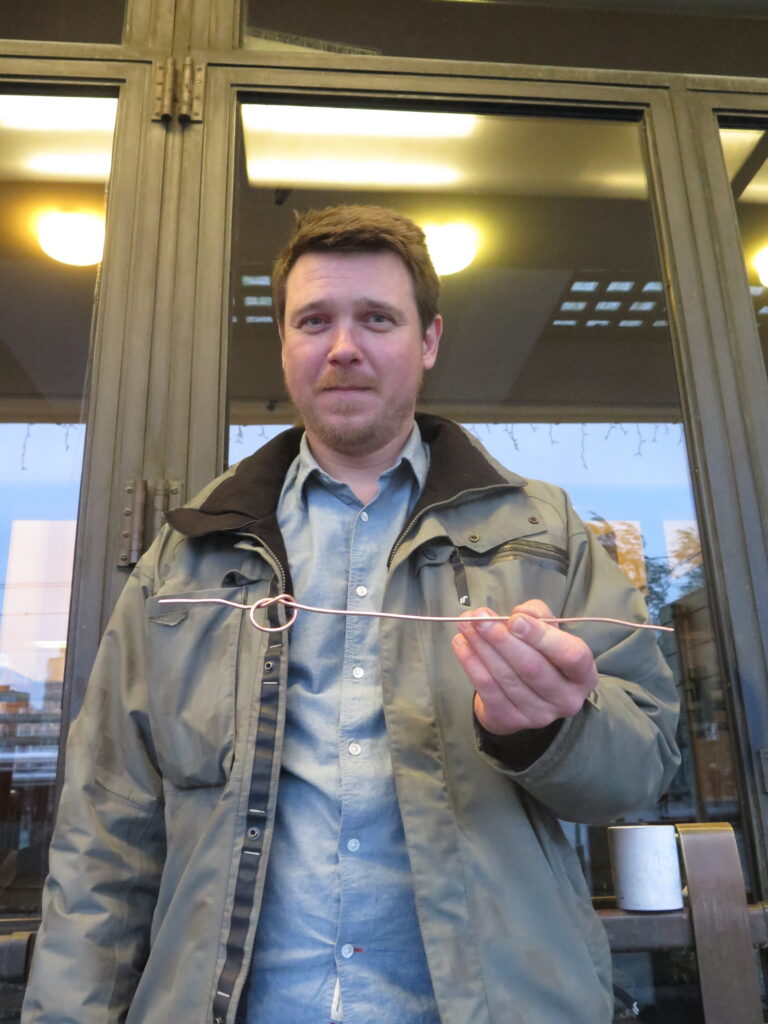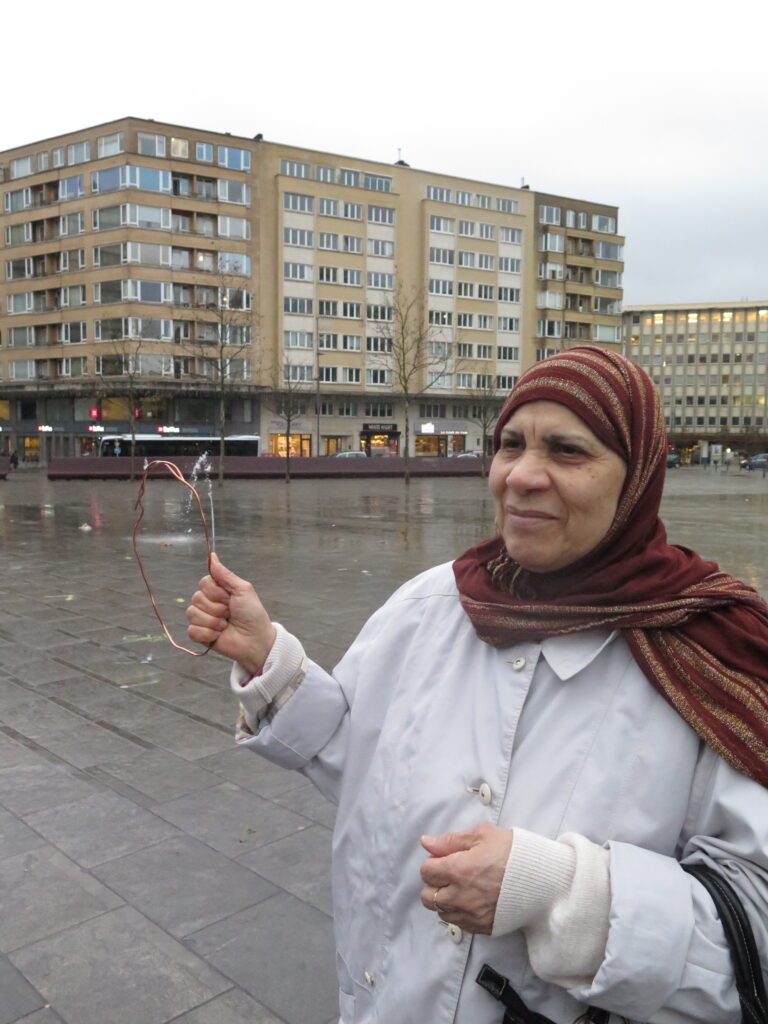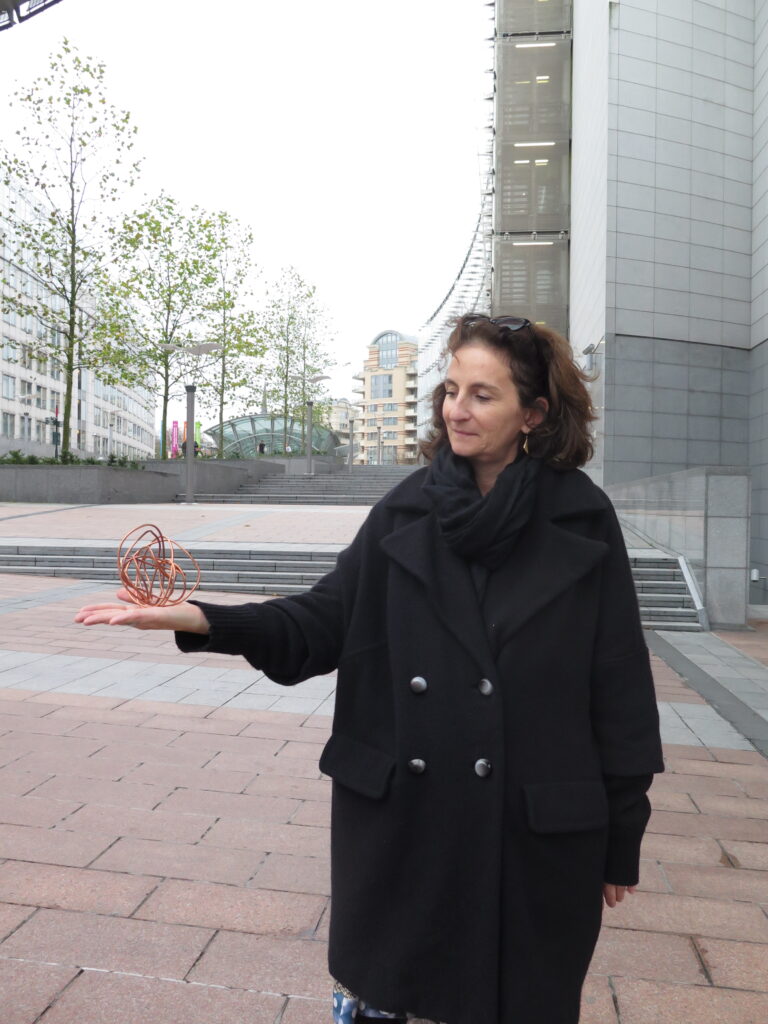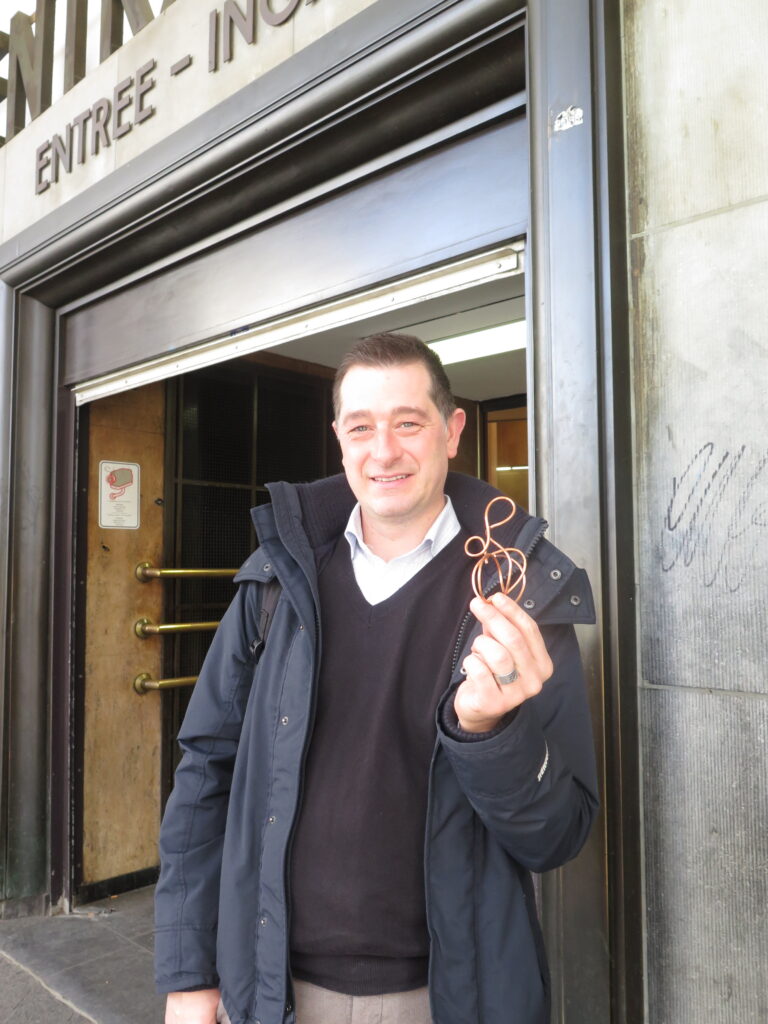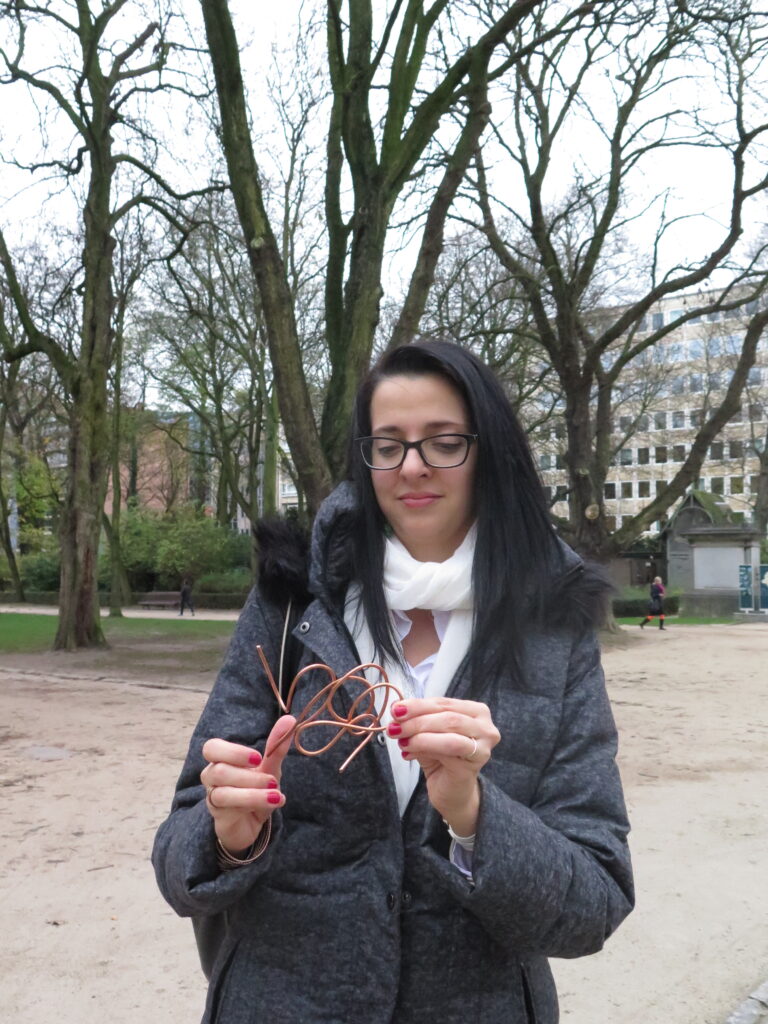Města napětí / Stress and the city / 2016
Czech Center, Brussels
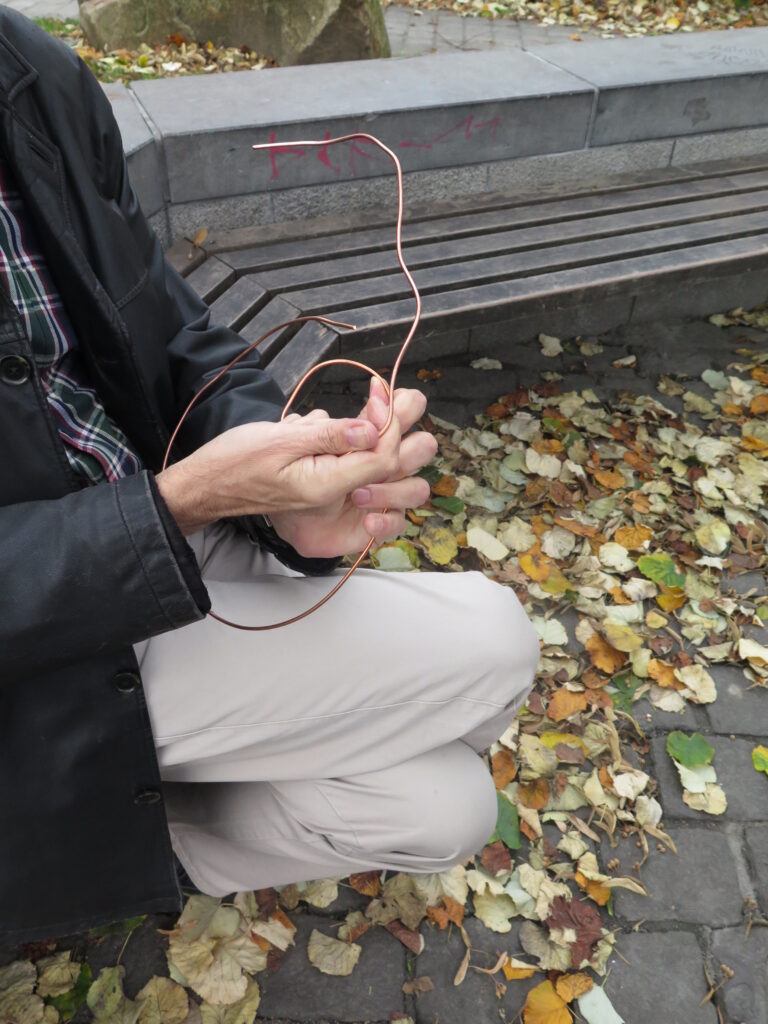
Stres a jeho zobrazení. Stres ve městě a z města. Stres motivuje, distres škodí. Kde je hranice?
Fyzické reakce aktivující rezervy energie pro boj nebo útěk umožňují přežití jedince v přírodě. Tělo ale reaguje stejně i v případě psychických tlaků. Ve městě nám žádné reálné nebezpečí boje nehrozí, napětí se ukládá a může vést k řadě psychosomatických onemocnění. Stresovým faktorům se lze těžko vyhnout, stres se ale nedá dlouhodobě přehlížet. K jeho ventilaci slouží jednoduchá metoda – uvědomit si napětí, představit si jeho tvar a spontánně vytvořit jeho mentální model z měděného drátu coby pomyslného vodiče stresu. Problémy se sice nevyřeší, ale je pro nás snazší je snášet. Důležitější je však symbolická rovina situace, kdy si postmoderní městský člověk uvědomuje svůj stres a snaží se ho nějak zobrazit a zamyslet se nad ním.
/
Stress and its representation. Stress in the city and stress out of the city. Stress motivates, distress harms. Where is the border?
Physical reactions activate energy supplies for fight or flight, allowing a person to survive in nature. But the body reacts in the same way under mental pressure. There is no real danger of fighting in the city, tensions are being stored and can lead to a number of psychosomatic illnesses. Stress factors are difficult to avoid, but stress cannot be overlooked in the long run. There is a simple method that can be used for its ventilation – to realize the tension, to imagine its shape and to spontaneously create its mental model from copper wire as an imaginary conductor of stress. Problems will not be solved, but it is easier for us to endure them. More importantly, however, is the symbolic level of the situation when a postmodern urban individual is aware of his stress and tries to portray it and reflect it.

